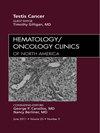对布鲁顿酪氨酸激酶抑制剂的耐药性。
IF 2.7
3区 医学
Q2 HEMATOLOGY
引用次数: 0
摘要
靶向布鲁顿酪氨酸激酶(BTK)已经彻底改变了慢性淋巴细胞白血病的治疗。然而,当患者继续接受治疗时,耐药性会随着时间的推移而逐渐发展。对共价BTK抑制剂最常见的耐药机制是C481靶残基突变为丝氨酸,取消共价结合。其他较不常见的突变是伊鲁替尼后的C481Y/R/F,阿卡拉布替尼后的T474I,扎鲁替尼后的L528W。非共价抑制剂pirtobrutinib具有抗C481突变的活性,但耐药是通过替代位点BTK突变产生的。大约三分之一的BTK抑制剂耐药(包括共价和非共价)与BTK突变无关,目前仍知之甚少。本文章由计算机程序翻译,如有差异,请以英文原文为准。
Resistance to Bruton Tyrosine Kinase Inhibitors.
Targeting Bruton tyrosine kinase (BTK) has revolutionized the therapy for chronic lymphocytic leukemia. As patients remain on therapy, however, resistance develops progressively over time. The most common mechanism of resistance to covalent BTK inhibitors is mutation of the C481 target residue to serine, abrogating covalent binding. Other less common mutations are C481Y/R/F after ibrutinib, T474I after acalabrutinib, and L528W after zanubrutinib. The first-in-class noncovalent inhibitor pirtobrutinib has activity against C481 mutations, but resistance develops through alternative site BTK mutations. About one-third of BTK inhibitor resistance, both covalent and noncovalent, is not related to BTK mutations and remains poorly understood.
求助全文
通过发布文献求助,成功后即可免费获取论文全文。
去求助
来源期刊
CiteScore
4.10
自引率
0.00%
发文量
86
审稿时长
6-12 weeks
期刊介绍:
Hematology/Oncology Clinics updates you on the latest trends in patient management, keeps you up to date on the newest advances, and provides a sound basis for choosing treatment options. Under the direction of an experienced guest editor, each issue focuses on a single topic in hematology and oncology, including hemostasis and thrombosis, molecular and cellular basis of hematology, coagulation disorders, and cancers—bone, gastrointestinal, head and neck, lymphomas, neuroendocrine, breast, renal cell, melanoma, and more.

 求助内容:
求助内容: 应助结果提醒方式:
应助结果提醒方式:


